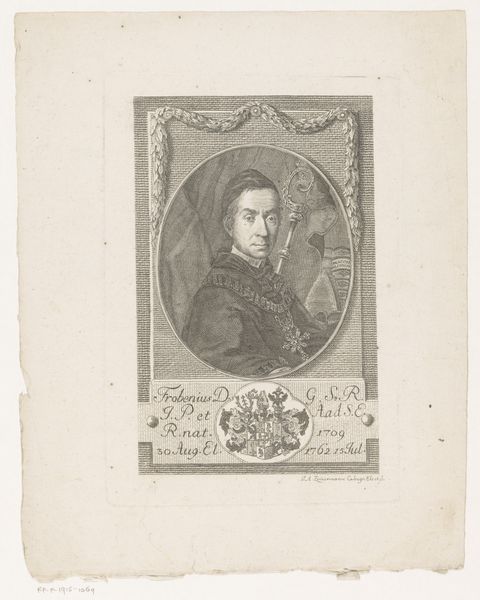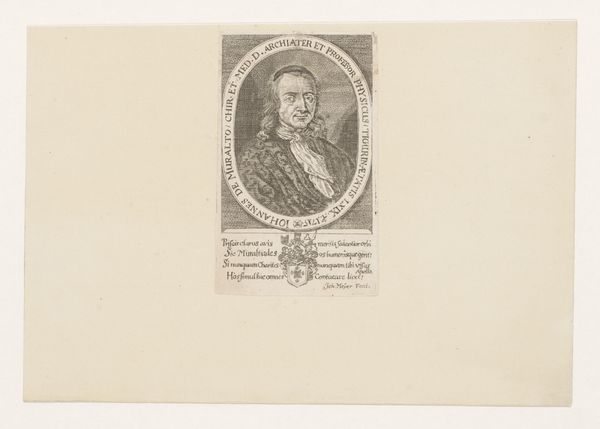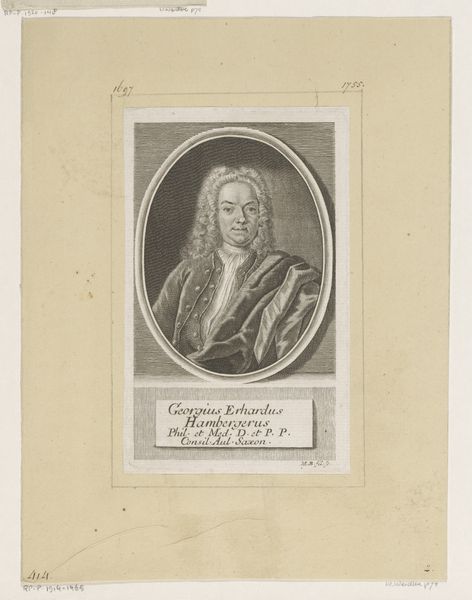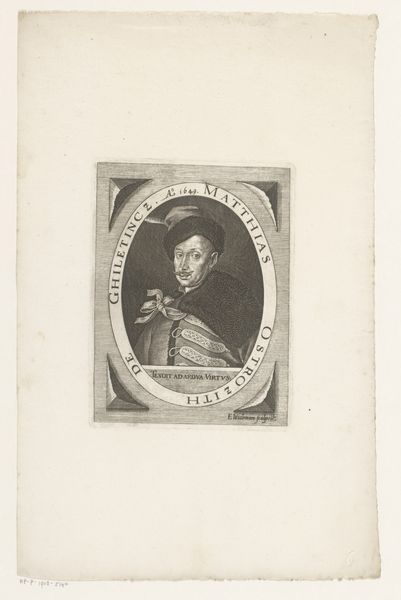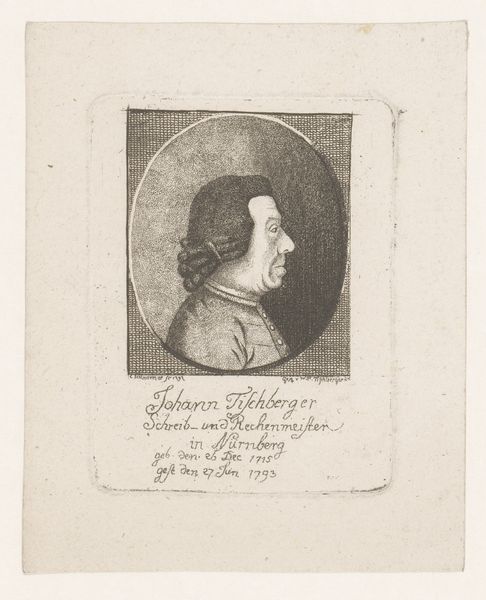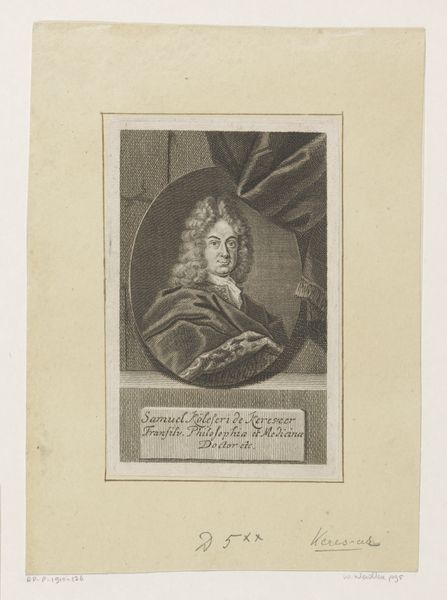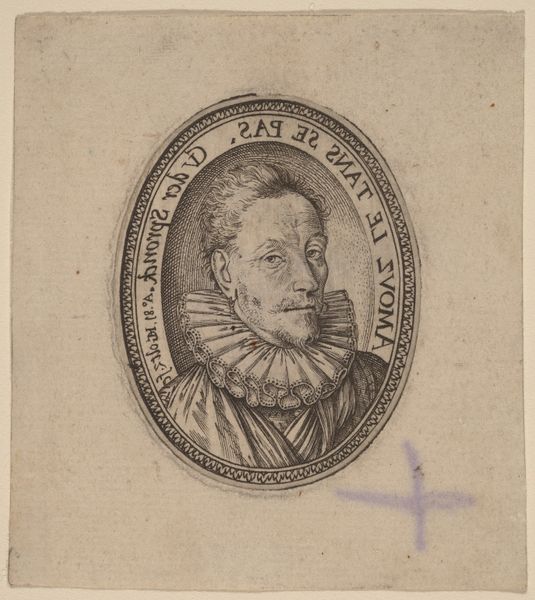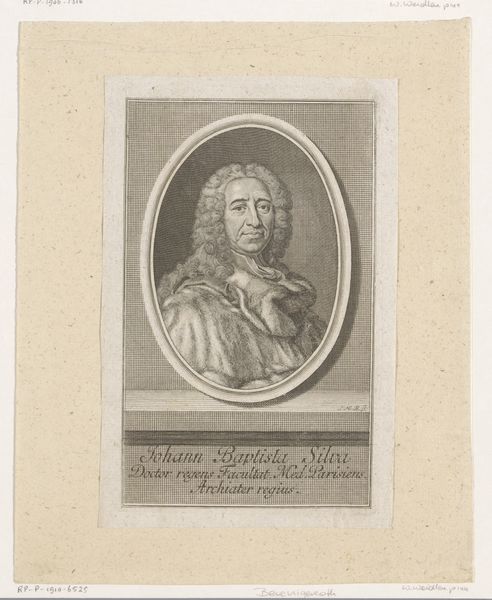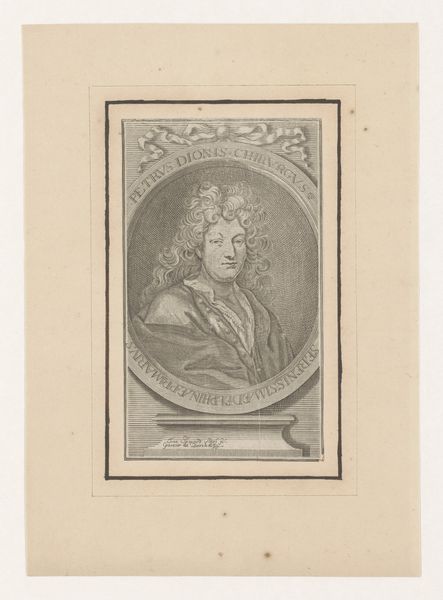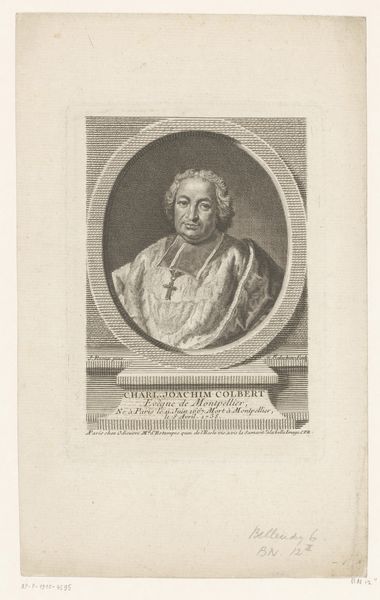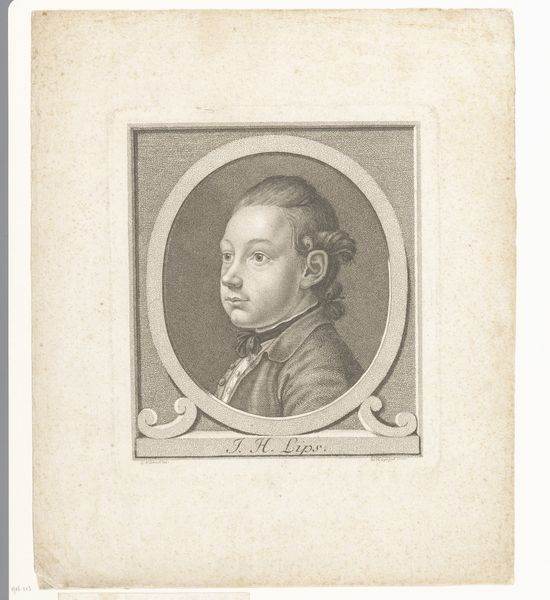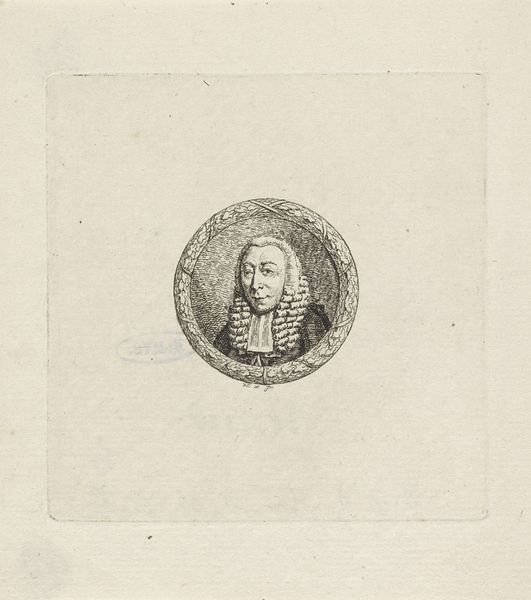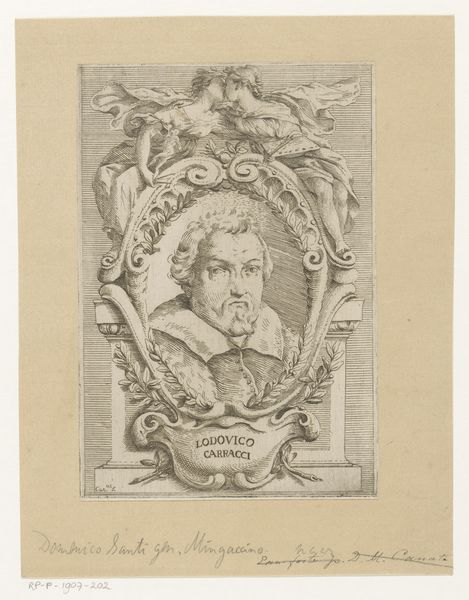
print, engraving
#
portrait
#
baroque
# print
#
figuration
#
engraving
Dimensions: height 123 mm, width 103 mm
Copyright: Rijks Museum: Open Domain
Curator: Before us, we have a print entitled “Portret van Ernst Soner,” created sometime between 1650 and 1685. It’s an engraving by Nicolaus Häublin. What's your immediate reaction to this portrait? Editor: My eye is drawn to the stark contrast – the face illuminated against that dark attire. It’s incredibly somber, almost severe. And that enormous ruffled collar practically frames his whole face! Curator: Right, and consider the historical context: Portraiture during this time, particularly for scholars like Soner, played a crucial role in shaping their public image. It reinforced status and intellect. The elaborate ruff, typical of the Baroque era, served to emphasize their importance within social and academic circles. It’s almost a type of power dressing, really. Editor: Definitely. But there's something more here, beyond status. Look at the intense gaze. To me, he seems almost… troubled. Given the political and religious upheavals of the 17th century, it would not surprise me if this artwork sought to explore deeper philosophical questions through his image. Curator: An excellent point. Think also about how the medium, engraving, allowed for wider distribution of Soner’s image. He wasn’t just posing for a single, wealthy patron. Prints made these portraits accessible to a broader, potentially international, audience. Editor: And that audience would be deeply familiar with the conventions of Baroque portraiture – the gravity, the emphasis on intellect and piety. Yet, within those established norms, artists still found room for nuanced expression. Curator: Precisely. I always find it interesting to see the tension between convention and personal expression during periods of significant socio-political transformation. Editor: I completely agree; that friction speaks volumes. Seeing his image has spurred thoughts regarding representation and how historical images affect modern perceptions. Curator: For me, reflecting on how these individuals navigated the societal roles to find individual agency reveals complexities in identity and self-representation across history. Editor: A perfect parting consideration on such a layered representation.
Comments
No comments
Be the first to comment and join the conversation on the ultimate creative platform.
